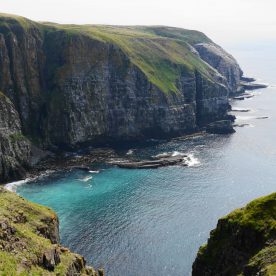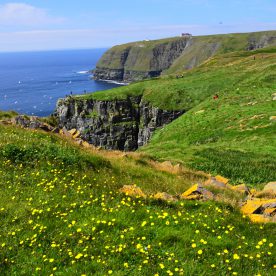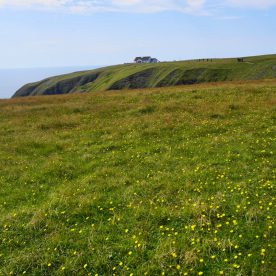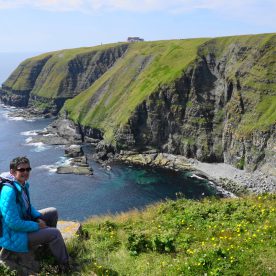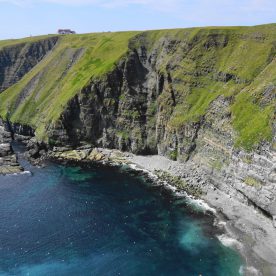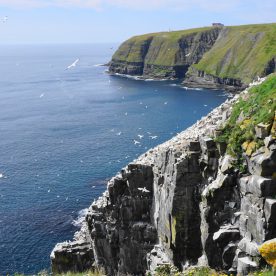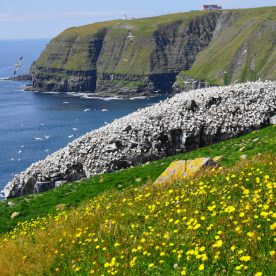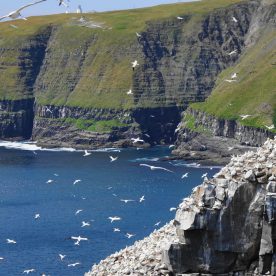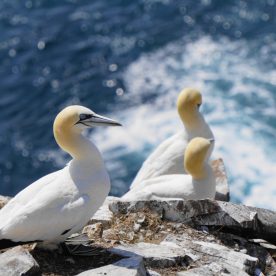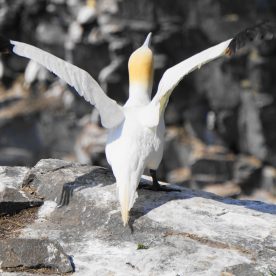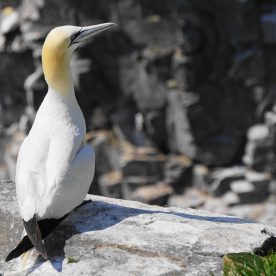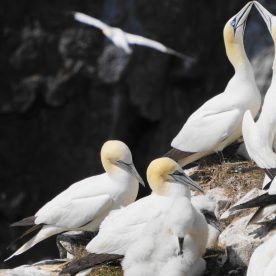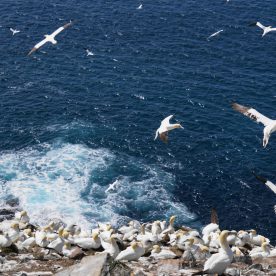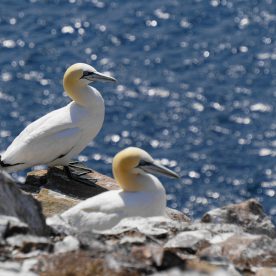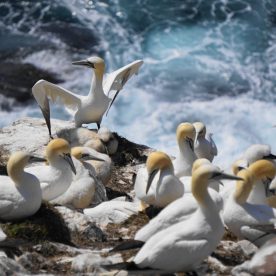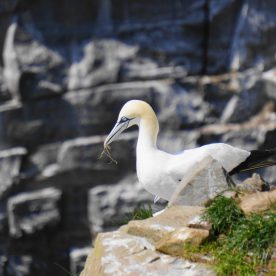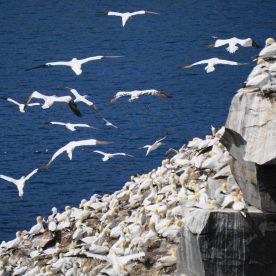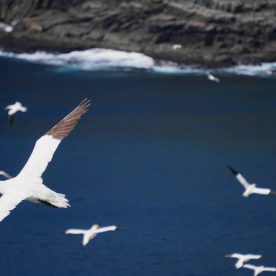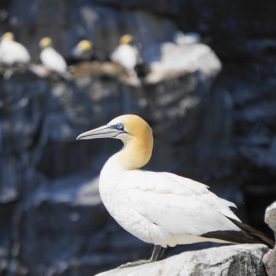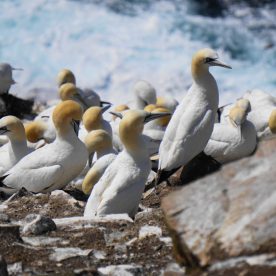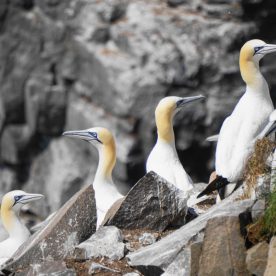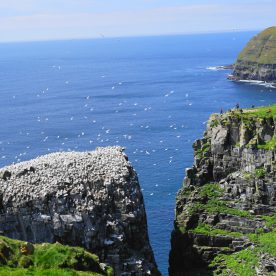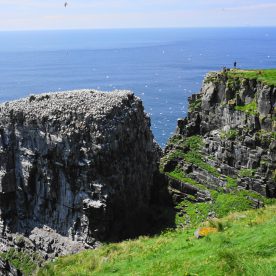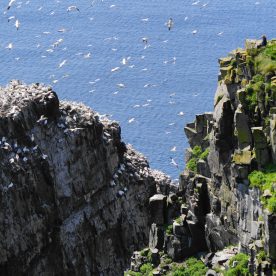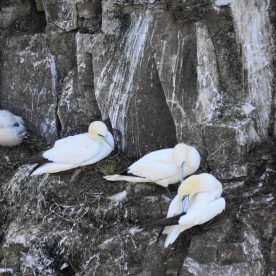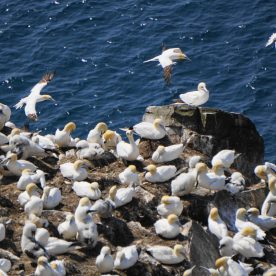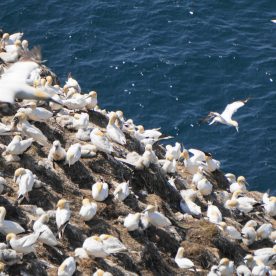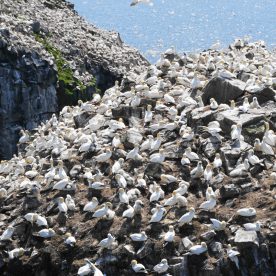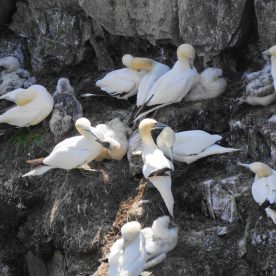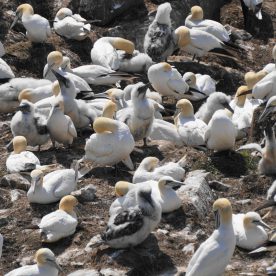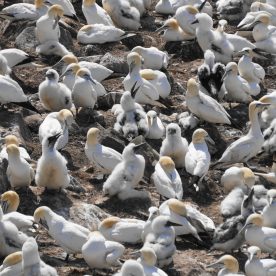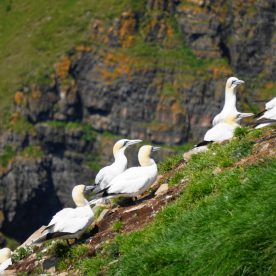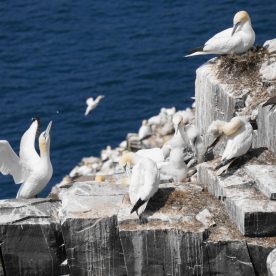Cape St. Mary’s Ecological Reserve is a wonderland for birdwatchers and explorers alike. Thousands of gulls, razorbills, common murres, black-legged kittiwakes, northern gannets, and double-crested and great cormorants nest here. Where 20,000 scoters, long-tailed ducks, harlequin, dovekies, thick-billed murres, and kittiwakes winter.
Located about 200 km southwest of St. John’s, Cape St. Mary’s Ecological Reserve also known as “the Cape” is one of Newfoundland and Labrador’s major seabird colonies. During the breeding season, it is home to 24,000 Northern gannet, 20,000 black-legged kittiwake, 20,000 common murre, and 2,000 thick-billed murre. In addition, more than 100 pairs of razorbill, more than 60 pairs of black guillemot, plus double-crested and great cormorant, and Northern fulmar nest there.
What makes it so spectacular, however, is that all these birds can be seen from land, as close as 10 metres away.
Northern gannets fencing
Most of the Northern gannets, for example, make their nests on “Bird Rock”-a 100-metre-tall stack of sandstone that is separated from the viewing area by a chasm only a few metres wide. The gannets’ courtship, nesting, and feeding behaviours, interactions, and delicate flying manoeuvres over the crowded sea stack are endlessly fascinating and easily observed from the natural, cliff-top viewing area.
Bird Rock is reached by a 1-km footpath through the open meadows that top steep cliffs, where wild iris grow and sheep sometimes graze. Cape St. Mary’s is within the Eastern Hyper-oceanic Barrens ecoregion PDF (861 KB), one of the world’s most southerly expanses of sub-Arctic tundra. Mosses, lichens, alpine wildflowers, and low-growing shrubs carpet the seemingly treeless plateau over which visitors walk. The area has ponds, bogs, brooks-and sheer cliffs plunging down to the sea. Offshore, during the summer, whale spouts can often be spotted.
Particularly in the early part of the breeding season (April through June), the weather at Cape St. Mary’s can be damp, foggy, and cool. The average temperature in July is 14C and there are 200 days of fog a year, on average, at the Cape. On such days, the attractions of the modern, bright Interpretive Centre are particularly strong. The birds and their environment are interpreted inside. The building is located near the parking lot and Coast Guard operated lighthouse, which was originally built in 1860.
Cape St. Mary’s Ecological Reserve covers 64 km2; 54 km2 of this is the marine portion. The waters offshore are an important wintering site for thousands of sea ducks, including harlequin, common eider, scoter, and long-tailed duck.
Cape St. Mary’s was established as an ecological reserve in 1983.
